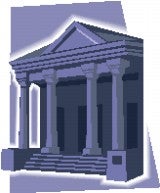Commemorate Human Rights Day: Activity sheet 2 - rightsED
back to Commememorate human rights day
Commemorate Human Rights Day - Activity sheet 2
What rights does the UDHR recognise?
The Universal Declaration of Human Rights is made up of a Preamble, and 30 Articles.
Read
Read the UDHR at http://www.un.org/Overview/rights.html
There are certain principles that were behind the creation of these 30 rights.
Some of these principles relate to civil and political rights which defend the fundamental right to life, and states that no one can be tortured, enslaved, arbitrarily imprisoned, made to do forced labour, or be restricted from such basic freedoms as movement, expression and association. Such principles are stated in negative terms such as ‘freedom from’ (discrimination, torture etc).
Other principles relate to economic, social and cultural rights, which assure people of their rights to basic standards of life. These rights are founded on a belief that we can enjoy our rights, freedoms and economic justice all at the same time. Economic, social and cultural rights are often stated in positive terms such as ‘right to’ (life, education etc).
Class discussion
1. As a class, decide which articles apply to each of the following principles:
a. Some of the rights are civil and political rights.
Which articles would fit this category?
b. Some of the rights are economic, social and cultural rights.
Which articles would fit this category?
c. Some of the rights are community obligations for the rights to be able to exist.
Which articles would fit this category?
Activity
The French-Jewish jurist, Renee Cassin, was one of the main authors of the Declaration. He described the structure of the UDHR in a different way to that above, he spoke of four pillars supporting a roof.
1. Decide which articles fit into the following categories:
a. One pillar is personal rights – ‘My right to be me’.
Which articles would fit this category?
b. A second pillar is rights that belong to the individual in his/her relationships with the social group – ‘Don’t interfere with us’.
Which articles would fit this category?
c. A third pillar is civil liberties and political rights – ‘I can help decide’.
Which articles would fit this category?
d. A fourth pillar is rights exercised in the economic and social area – ‘I need care and work’.
Which articles would fit this category?
e. The ‘roof’ that the pillars hold up and which in turn helps to keep the pillars standing is the right to a social and international order in which these can all be realised – ‘We all need a roof to hold together’.
Which articles would fit this category?
2. Sketch your own human rights building below and write key words from the relevant UDHR articles in the various pillars. An example is shown.

When you have completed your sketch, form groups of three or four and discuss why you chose the articles to go in each category. Try and come to a final decision as a group.
Extension activity
There are many other interesting ways the structure of the UDHR could be described and presented. Apart from the ‘four pillars supporting a roof’, how else could you describe the UDHR structure?
In pairs, decide on an alternate structure for the grouping of the UDHR. How would this structure best be represented (e.g. as a poster or a sculpture)?
Present your ideas to the class.
